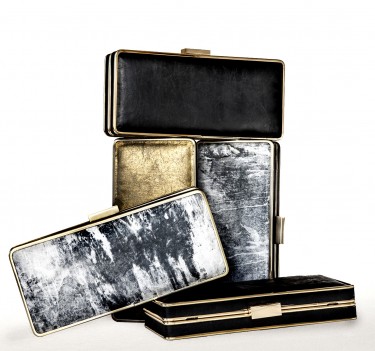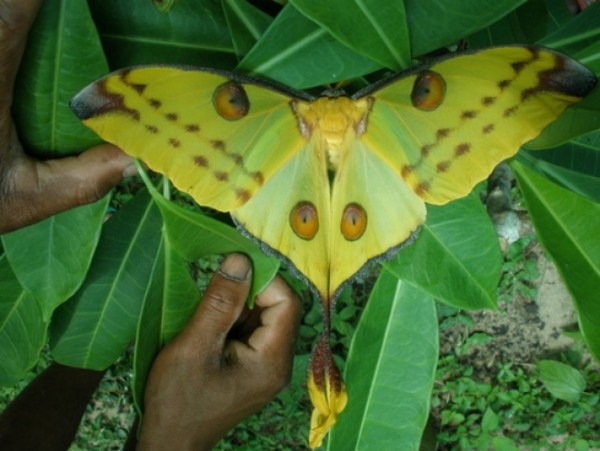
Paper No 9
You may not think of paper as an important fashion material, but Paper No 9 has been working hard to

In northeast Madagascar – on the borders of the plentiful Makira and Masoala regions – Wild Silk Markets works a sustainable silk textile practice, which gives back to the rich MaMaBay landscape and its impoverished people.
The beauty of the Bay of Antongil and surrounding rainforest paints a picture of a fertile landscape. But sadly, it’s under-threat. In 2003, environmentalist Catherine Craig launched the project Conservation Through Poverty Alleviation (CPALI) – an enterprise focused on sustaining this environment; working with local communities through farming and textile fabrication.
CPALI was later renamed Wild Silk Markets. But the firm’s mission hasn’t changed: to connect people and ecosystems in a mutually beneficial way.
The Madagascan region Wild Silk serves is home to over 300,000 people; 80% of which are engaged in subsistence agriculture.
According to Wild Silk Markets assistant director, Kerry O’Neill, local silk production offers farmers an income that doesn’t destroy natural resources, with all profits going back into the Madagascan project.
“Through our wild silk livelihoods program, rural farmers are earning money through silk production while supporting native species and forests in Madagascar,” says O’Neill.
Every part of Wild Silk Markets’ production process, from the farming to weaving, is sustainable. The silk cocoons, produced by native species of silkworms, are hand-reared by Malagasy farmers and sewn together by farmer-artisans into unique, non-spun textiles.
“These artisans and farmers work together to raise native silkworms and sew their raw silk cocoons into rich mosaics of natural Earth tones,” explains O’Neill.
The resulting textile is washed, pressed and sold by the square meter.
“Because we do not boil the cocoons, a process necessary for spinning the silk into soft thread, the silkworms are not killed and the silk retains its original metallic shine,” she adds.
Wild Silk Markets’ products are completely unique to the world. The species of silkworms grown are native to this particular region of Madagascar and are not used by any other project.
Moreover, the way the silk is processed, including Wild Silk’s no-kill methodology and non-spun processing technique (which has a patent pending), simply exalts the exclusivity and luxury of such a silk fabric.
“The silk is firm, resilient, lustrous and porous, allowing light to dance around it and through it,” says O’Neill. “And it’s UV-resistant, hand-washable and color-fast.”
“It’s a versatile fabric and some of the most popular uses of our textile include wall-hangings, curtains, room-dividers or privacy screens, decorative pillows, artwork, hats, jewelry, lighting and ladies’ clutches.”
Wild Silk has sold its ready-made textiles to ABC Carpet and Home for silk runners, placements and pillows. Habu Textiles sources raw cocoon bundles for their own fabrics, while dConstruct uses the silk to craft its eco-resin jewelry.
Another major client is furniture designer, Karen Brown who is currently in the process of developing an interiors collection, which features silk.
Despite Wild Silks’ conversation efforts, other silk merchants using non-sustainable collection techniques, which diminish forest habitat, are threatening the major species of silkworm that is used in the plateau region.
Rather than be disheartened, it’s an incentive for Wild Silks to continue farming their own silkworms and give designers the option of purchasing luxury fabrics that look good and don’t hurt the environment.
But finding new ways to improve production methods are a big part of the firm’s journey, explains O’Neill.
“Our team in Madagascar is currently experimenting with new species of silkworm to test the viability of their silk and developing new product lines around those species,” says the director.
“Essentially, Wild Silk is a product you can feel good about from start to finish. It’s good for the environment, it builds a pathway out of poverty for farmers and artisans, and it supports rainforest conservation,” she adds.
“Wild silk is shimmering, sophisticated and sustainable.”
The latest collection from Wild Silk Markets is available for purchase online with Le Souk.
The article was written by Benjamin Fitzgerald, and appears courtesy of Le Souk.
Website; www.lesouk.co